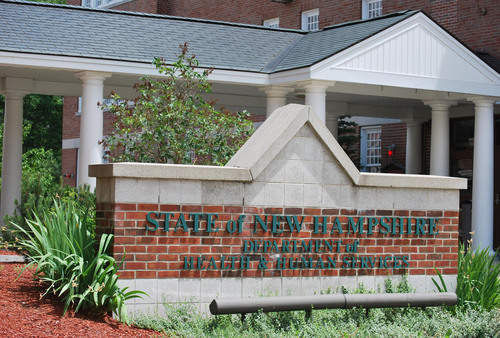
The final piece in the case of Anna Carrigan, a former New Hampshire health department worker who received a $120,000 settlement last year from the state over a whistleblower lawsuit, rests with the New Hampshire Supreme Court for now.
The second portion of the lawsuit was brought to superior court in February 2021, calling for changes at DCYF and claiming the state is not spending enough to protect children from abuse and neglect.
This portion was rejected on its merits by Superior Court Judge Andrew R. Schulman but was appealed to the New Hampshire Supreme Court in May.
The appeal restates what Carrigan’s attorney, Michael Lewis, argued in the original lawsuit regarding the state’s failure to uphold the law regarding RSA 169-C, New Hampshire’s Child Protection Act created in 1979.
“The statute says that each child shall receive a response from the government upon a report of child abuse and neglect,” Lewis said. “Each child means every child. When you have a clear law creating clear mandates and you have a 2,000-case backlog you have illegality.”
Lewis says the trial court erred by adding restrictions to state constitutional language that does not exist.
Part I Article 8 of the state constitution confers standing upon taxpayers that are eligible to vote and this gives them the right to challenge illegal spending, Lewis says.
“The trial court concluded that language foreclosed Carrigan’s lawsuit because she is challenging the state’s failure to spend [enough],” Lewis said. “But there is nothing in the state constitution or its language that would indicate that this sort of challenge is not contemplated by the state constitution language. The conclusion runs completely counter to the substantive obligations that are imposed by 169-C and the law generally when it comes to children.”
The trial court’s decision stated Carrigan does not have standing because she hasn’t been personally affected by the system and that Article 8 only allows taxpayers the right to petition the court regarding for a declaration that it “has spent (or has approved to spend) funds in violation of a law, ordinance or constitutional provision.”
“Nothing in the text of Article 8 suggests that it grants every taxpayer the right to seek a judicial determination of whether the government has sufficiently funded the programs that it runs. Such a reading would allow virtually every resident of the state to challenge as legally inadequate the funding level for virtually every line item in the State budget.,” the trial court decision states.
Carrigan, who co-founded a child advocacy group called The New Road Project, begs to differ.
“I know, having a relative in this system that I’ve been affected in a lot of ways. However, the law doesn’t always consider personal realities,” she said.
One of the counterarguments to the trial court’s line of reasoning in her appeal refers to the Claremont decision, to the extent this lawsuit confers standing on the public to protect children.
“Many people in Claremont were not directly affected by the education budget but they were given standing,” Carrigan said. “The state is arguing that not spending enough is not an issue of spending. Maybe they’re spending the right amount, but they’re not spending it in right places because children are still dying.”
Lewis views the “slippery slope” argument presented by the trial court as cutting both ways.
“If we don’t hold the state accountable for this what can we expect at all from the state in terms of its legal obligations,” he asked. “If we can’t say the state is obliged to meet baseline legal standards in this environment for kids than everything else is an ephemeral joke. I don’t want to hear about access to justice or public safety from anyone who is a politician or judge who can’t do the right thing here.”
One of those baseline legal standards involves caseloads. The national standard is 12 caseloads per caseworker—in 2016 there were 90 in New Hampshire, and the current number stands around 19, according to Director of DCYF, Joe Ribsam.
Ribsam said caseloads for caseworkers at the agency are improving—from the worst in the nation just five years ago—but still not where they need to be. He cited issues with low pay as well as the difficulty filling these positions in the wake of the pandemic.
“We’re down into the high teens but the goal is 12 cases per worker. So, we have some work to do, and we do see a bit of modest growth in past two months,” Ribsam said, referring to an “explosion of calls” to intake in March and April.
In April 2020, calls to central intake dipped to around 1450 from over 2300 in 2019 during the same month. The spike in March 2021 of over 2500 calls, Ribsam said, has to do with pandemic restrictions beginning to ease.
DCYF refers to cases that are open longer than 60 days as ‘overdues,’ Ribsam said.
“Many cases aren’t necessarily backlog cases just because the investigation hasn’t been closed. Sometimes there’s a totally legitimate reason even with a perfect staff.”
In 2016 there were as many as 3500 ‘overdues’ and in May 2021 the number of assessments open longer than 60 days or overdues was 718.
To show there’s progress over the past few years, Ribsam points to the child protection workforce capacity chart on the agency’s website. This section shows actual assessments assigned to child protection workers.
“Even though we have high call volume we don’t have high case load levels,” he said, pointing to this as an example of progress. “At the same time, I don’t want to say ‘mission accomplished.’ 19 is a far cry from 12 which is where we need to get.”
The state senate voted recently to defund vacant positions which doesn’t help move closer to the national standard, Ribsam said. There are currently 138 assessment workers at DCYF, but under SB 6 the agency is funded to have 160.
Other issues needing attention, Ribsam said, involve staffing and stagnating services at DCYF.
“The issue is not just staffing but services performed over that period as well. Providers did not receive any rate increases and models weren’t redesigned to meet people’s needs. If you don’t have enough people to serve families, you also don’t have enough people to do thoughtful back office work to redesign and contract for new programs.”
One of Carrigan’s concerns is the low number of substantiated cases at DCYF. Most states have around a 20 percent substantiation rate while New Hampshire’s is at only seven percent.
Assessments—which determine whether a case is substantiated—involve establishing whether abuse or neglect has occurred, as well as a risk assessment.
Ribsam said DCYF is using an actuarial tool called Evident Change to determine the risk—or likelihood—of a particular outcome.
“When you complete these tools about 30 percent come up as high risk or very high risk, but only 7 are substantiated for abuse and neglect,” he said, blaming restrictive statutory definitions of what constitutes abuse and neglect in New Hampshire courts. “Either way, the delta is that families need attention whether through the courts or another means.”
One way that gap is being filled, Ribsam said, is through Community Based Voluntary Services such as Waypoint and the Family Resource Center.
“These organizations can provide the same services as we would in court, but without court involvement,” Ribsam said.
For now, Carrigan’s lawsuit awaits a decision with the NH Supreme Court.
If the Court rules in Carrigan’s favor the state will need to confirm or deny what Lewis calls “the facts alleged in the complaint,” he said.
“I want a declaration of illegality and I don’t think it’s that complicated. It’s bleak house in nature,” he said. “State government is acting more like an insurance rather than thinking about the public health and the public good.”
 These articles are being shared by partners in The Granite State News Collaborative. For more information visit collaborativenh.org.
These articles are being shared by partners in The Granite State News Collaborative. For more information visit collaborativenh.org.







